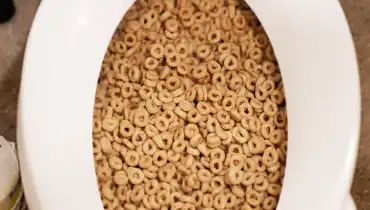We have noticed the article relating to Is it safe to flush food (especially rice) down the toilet? below on the net and felt it made good sense to write about it with you on my blog.

Introduction
Many individuals are typically faced with the predicament of what to do with food waste, particularly when it pertains to leftovers or scraps. One typical inquiry that develops is whether it's okay to purge food down the bathroom. In this write-up, we'll look into the reasons people may think about purging food, the repercussions of doing so, and different techniques for correct disposal.
Reasons individuals might take into consideration purging food
Lack of understanding
Some people may not be aware of the prospective damage brought on by flushing food down the bathroom. They may wrongly think that it's a harmless method.
Comfort
Flushing food down the toilet might seem like a fast and simple option to throwing away undesirable scraps, especially when there's no nearby trash bin readily available.
Negligence
In some cases, people may merely choose to flush food out of large laziness, without taking into consideration the repercussions of their activities.
Consequences of flushing food down the bathroom
Ecological impact
Food waste that ends up in waterways can add to air pollution and injury water environments. In addition, the water made use of to purge food can stress water sources.
Plumbing problems
Purging food can result in clogged up pipelines and drains, triggering expensive plumbing fixings and hassles.
Kinds of food that need to not be purged
Coarse foods
Foods with fibrous textures such as celery or corn husks can obtain entangled in pipes and create obstructions.
Starchy foods
Starchy foods like pasta and rice can absorb water and swell, resulting in clogs in pipelines.
Oils and fats
Greasy foods like bacon or food preparation oils must never be purged down the toilet as they can solidify and trigger clogs.
Appropriate disposal techniques for food waste
Making use of a garbage disposal
For homes outfitted with waste disposal unit, food scraps can be ground up and purged through the plumbing system. Nevertheless, not all foods are suitable for disposal in this way.
Recycling
Particular food packaging materials can be recycled, reducing waste and lessening environmental impact.
Composting
Composting is an environment-friendly means to get rid of food waste. Organic materials can be composted and made use of to enhance soil for horticulture.
The importance of proper waste monitoring
Minimizing environmental injury
Appropriate waste management techniques, such as composting and recycling, assistance minimize air pollution and maintain natural resources for future generations.
Protecting plumbing systems
By preventing the technique of flushing food down the toilet, home owners can avoid expensive pipes repairs and keep the integrity of their plumbing systems.
Final thought
To conclude, while it might be appealing to purge food down the bathroom for comfort, it is very important to recognize the possible consequences of this action. By taking on correct waste management practices and disposing of food waste sensibly, people can contribute to much healthier plumbing systems and a cleaner setting for all.
FLUSH FOOD DOWN THE TOILET?
FLUSHING FOOD CAN CAUSE BLOCKED DRAINS IN YOUR HOME
All of the plumbing fixtures in your home are connected to the same sewer pipe outside of your home. This outdoor sewer pipe is responsible for transporting all the wastewater from your home to the Council sewer mains. Even small pieces of food that go down the kitchen sink can cause problems for your sewer. It should therefore be obvious that flushing larger bits of food, such as meat, risks a clog in either the toilet itself or the sewer pipes. Flushing greasy food is even more problematic because oil coagulates when it cools, coating the interior lining of your pipes.
THE TOILET IS NOT A BIN
Food isn’t the only thing that people shouldn’t be flushing down the toilet. People use the toilet to dispose of all kinds of things such as tampons, makeup wipes, dental floss, kitty litter and even underwear. Water goes to great lengths to educate residents about the high costs and stress placed on wastewater treatment systems simply from people flushing the wrong stuff down the toilet. It costs taxpayers millions of dollars each year, and homeowners thousands in blocked drain repairs.
FLUSHING FOOD IS A WASTE OF WATER
Flushing food is a waste of our most precious resource - water. In June this year Level 1 water restrictions were introduced to protect water supply from drought conditions. Much of New South Wales continues to be affected by prolonged drought with recent figures revealing up to 97 per cent of the state remains in drought. Depending on whether you have a single or dual flush toilet, every single flush uses between five and 11 litres of water. In the current climate this is a huge amount of water to be wasting on flushing food that should be placed in the bin (or better yet, the compost).
https://www.jabplumbingsolutions.com.au/blog/can-you-flush-food-down-the-toilet

Do you really like reading up on What Can Happen If You Flush Food Down the Toilet?? Give feedback below. We will be glad to find out your thoughts about this review. We hope that you visit us again before long. Do you know about someone else who is intrigued by Is it safe to flush food (especially rice) down the toilet?? Take a moment to share it. We take joy in reading our article about .
Free Estimate